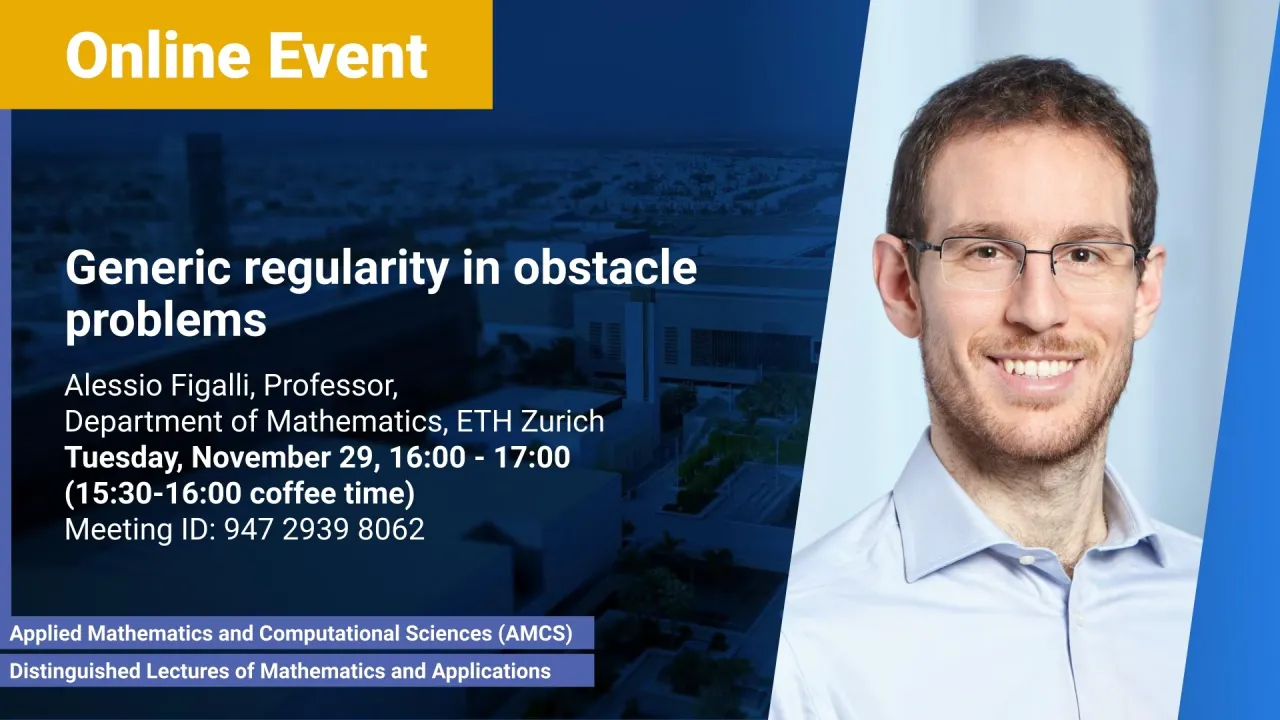
Generic Regularity in Obstacle Problems
The classical obstacle problem consists of finding the equilibrium position of an elastic membrane whose boundary is held fixed and which is constrained to lie above a given obstacle. By classical results of Caffarelli, the free boundary is smooth outside a set of singular points. Explicit examples show that the singular set could be, in general, as large as the regular set. In a recent paper with Ros-Oton and Serra we show that, generically, the singular set has codimension 3 inside the free boundary, solving a conjecture of Schaeffer in dimension n ≤ 4. The aim of this talk is to give an overview of these results.
Overview
Abstract
The classical obstacle problem consists of finding the equilibrium position of an elastic membrane whose boundary is held fixed and which is constrained to lie above a given obstacle. By classical results of Caffarelli, the free boundary is smooth outside a set of singular points. Explicit examples show that the singular set could be, in general, as large as the regular set. In a recent paper with Ros-Oton and Serra we show that, generically, the singular set has codimension 3 inside the free boundary, solving a conjecture of Schaeffer in dimension n ≤ 4. The aim of this talk is to give an overview of these results.
Brief Biography
Alessio Figalli earned his doctorate in 2007 under the supervision of Luigi Ambrosio at the Scuola Normale Superiore di Pisa and Cédric Villani at the École Normale Supérieure de Lyon.
He was a faculty in France and the US, before moving to ETH Zürich in 2016 as a chaired professor. Since 2019 he is the director of the “FIM-Institute for Mathematical Research” at ETH Zürich.
Figalli has won several prizes, including the EMS Prize in 2012, the 2015 edition of the Stampacchia Medal, and the 2017 edition of the Feltrinelli Prize for mathematics. He was an invited speaker at the International Congress of Mathematicians 2014. In 2018 he won the Fields Medal for “his contributions to the theory of optimal transport, and its application to partial differential equations, metric geometry, and probability”.